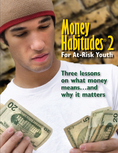From: <newsletter@nire.org>
Date: Tue, Feb 4, 2014 at 11:01 PM
Subject: Special Workshops on RE and Filial Methods + AFREM Community Meeting
To: billcoffin68@gmail.com
Special Workshops on Relationship Enhancement® and Filial Methods
Co-Sponsored by
National Institute of Relationship Enhancement® (NIRE) and Association for Filial and Relationship Enhancement® Methods (AFREM)
Held in Conjunction with the 2014 AFREM Community Sharing and Connecting Meeting
April 25-26, 2014 in Bethesda, MD
Community Sharing and Connecting Meeting
Facilitator: Robert Brown, Member of the Board of IDEALS, the larger organization supporting AFREM and NIRE
Everyone with an interest in Relationship Enhancement Methods, Filial and Child-Centered Play Therapy is encouraged to attend this meeting! We want to know you more, hear about your work and passion for these approaches, and help you connect with others. Our purpose is to exchange ideas and share in each others’ enthusiasm for helping persons in need through RE, Filial and CCPT. Participants will have an opportunity to share what is working for them and excites and motivates them, including how they are using these various models, what innovations or modifications they have found useful, and how these programs are being used in the US and other countries. Please come and let us know you, while seeking support and connections for your work and helping us all expand our expertise in applying the methods.
Organized Friday Night Dutch Treat Dinner
This year’s traditional “Dutch Treat” dinner will be held on Friday night April 25. This well attended event always proves to be a fun time to connect and relax with friends and colleagues around the dinner table. Please join us if you can! Details below. And please RSVP so we can properly plan with the restaurant.
CE Workshops
In conjunction with AFREM’s annual meeting, the National Institute of Relationship Enhancement® (NIRE) and AFREM are co-sponsoring three special workshops on Friday April 25 and Saturday April 26.
Friday will include two half-day workshops. The morning workshop is entitled “The Young Child as Person: The Development of Healthy Conscience.”
The Friday afternoon workshop is entitled “Group Filial Therapy.”
Saturday will feature two 1.5 hour workshops. The first workshop is entitled “The Neurobiology of Empathy.”
The second 1.5 hour workshop is entitled “Let Me Walk a Mile in Your Shoes—With Your Corns and Calluses: Using Empathy for Context to Help Clients Get Unstuck.”
Each Friday workshop qualifies for 3 CE credits.
Each Saturday workshop qualifies for 1.5 CE credits.
Registration
Registration information may be found below.
AFREM Special Workshops Registration Form
Friday Workshops
The Young Child as Person: The Development of Healthy Conscience
Presenters: Maryhelen Snyder, Ph.D. and Nancy Cochran, MA, CAS, LMHC
Friday, April 25, 9:00 a.m. - 12:15 p.m. 3 CE credits
This very practical book describes in anecdotal detail and with theoretical clarity the foundations and practices that enhance the development of conscience in young children. All the ideas and premises of this book are congruent with Filial Therapy - largely because both approaches are grounded in Rogerian insights and practices.
Mel Snyder will present the three basic convictions about the young child that are at the heart of what the authors call "the justice culture." She will also clarify what is meant by active understanding, enabling a child to function and constructive caring.
Nancy Cochran who is currently active in working with the young child in school and family settings, will discuss case examples and practical applications.
Note: The revised edition of the book by this title (authored primarily by Martha Snyder) will be in print and available from Watermelon Mountain Press (at Amazon) and at the workshop.
Learning Objectives: Upon completion of this workshop, participants will be able to:
- To learn the rationale and experiential support for the three basic convictions about children that inform the "Justice Culture"; to learn and be able to illustrate the basic aspects of a justice culture that is co-created with children.
- To learn what is (and what is not) meant by "active understanding"; to be able to apply this practice to real life situations.
- Participants will be better able to identify and therefore provide empathy and “active understanding” with young children by discussing examples as seen and demonstrated in video examples of CCPT sessions.
Maryhelen Snyder, Ph.D. has been a mental health professional for 40 years, specializing much of that time in Relationship Enhancement therapy. She has authored many professional articles and book chapters and been an adjunct professor at the University of New Mexico Medical School. She is also a poet. Her recent book "Sun in an Empty Room" has a similar focus to her therapy work, which is wildly celebrative of human beings and human possibilities.
Nancy H. Cochran, MA, CAS, LMHC is an adjunct assistant professor for the Department of Educational Psychology and Counseling at the University of Tennessee, and Treatment Coordinator for the REACH (Relationship Enhancement and Child Harmony) Project. She is certified as a Child-Centered Play Therapy Supervisor by the National Institute for Relationship Enhancement (NIRE) and regularly provides post-masters supervision in Child-Centered Play Therapy. Nancy is co-author with her husband Jeff of The Heart of Counseling: A Guide to Developing Therapeutic Relationships (Thomson Brooks/Cole, 2006) and co-author with her husband Jeff and Dr. Bill Nordling of Child Centered Play Therapy: A Practical Guide to Developing Therapeutic Relationships with Children (Wiley, 2010).
Group Filial Therapy
Presenter: Louise Guerney, Ph.D.
Friday, April 25, 2:00 - 5:15 p.m. 3 CE credits
This workshop will present a description of group filial therapy; the advantages of working with a group; added complexities in working with filial groups; a brief summary of relevant supportive research; the role of the therapist in leading a filial play group; and a live role-play demonstration of a filial play group with audience members taking on roles of parents in a group.
Learning objectives: Participants attending this workshop will be able to:
- Describe criteria for setting up group filial therapy
- Describe the advantages and complexities of group filial therapy
- Describe how to structure group filial therapy to maximize parental learning
Dinner, Friday Night, 6:30 p.m. Dutch Treat.
Following the Friday afternoon workshop, those who are interested will go out together as a group for dinner for fun, relaxation and an opportunity to connect with friends and colleagues. If you are interested in joining the group for dinner: Please be certain to sign up on the Registration Form. Advance payment is not necessary, but we do need to be able to give an accurate count to the restaurant.
Saturday Workshops
The Neurobiology of Empathy
Presenter: Maryhelen Snyder, Ph.D.
Saturday, April 26, 9:00 - 10:30 a.m. 1.5 CE Credits
Brain research continues to support and qualify and quantify the amazing phenomenon of human empathy, the capacity that is at the very heart of the Relationship Enhancement family of therapies. In this workshop, I shall give an overview of that research to date. The workshop will include didactic, discussion, and practice components.
Learning Objectives: Upon completion of this workshop, participants will be able to:
- Describe the basics of "interpersonal neurobiology" on the two levels of (a) brain and body findings that clarify what is happening on a neurophysiological level when we empathize and (b) research regarding what happens in the therapy or training session that transforms subjective experience and close relationships.
- Apply these findings - and match the subjective (phenomenological) experience of attunement to self and other with the brain discoveries that support the subjective phenomena.
- Distinguish different therapeutic practices and approaches in regard to their alignment with neurophysiological research.
Maryhelen Snyder, Ph.D. has been a mental health professional for 40 years, specializing much of that time in Relationship Enhancement therapy. She has authored many professional articles and book chapters and been an adjunct professor at the University of New Mexico Medical School. She is also a poet. Her recent book "Sun in an Empty Room" has a similar focus to her therapy work, which is wildly celebrative of human beings and human possibilities.
Let Me Walk a Mile in Your Shoes—With Your Corns and Calluses: Using Empathy for Context to Help Clients Get Unstuck
Presenter: Mary Ortwein, MS, LMFT
Saturday, April 26, 11:00 a.m. - 12:30 p.m. 1.5 CE Credits
Empathy is one of the Relationship Enhancement® therapist’s most valuable tools. Yet sometimes empathy does not quite work to move a client or client couple to a place where something new is possible. In this workshop you will learn how to expand empathy to include context in order to move people past blocks. Contextual empathy includes entering into someone’s worldview and working from the inside. During this workshop participants will learn a rationale for contextual empathy, observe how it works, and practice using it.
Learning Objectives: Upon completion of this workshop, participants will be able to:
- Identify when and how to use contextual empathy in client scenarios
- Practice the use of contextual empathy
- Apply contextual empathy to a current client situation
Mary Ortwein, MS, LMFT is Founder of IDEALS for Families and Communities (IFC) in Frankfort, Kentucky. She is the co-author with Bernard Guerney of nine Relationship Enhancement® curricula, including Mastering the Mysteries of Love (MML).
Community Sharing and Connecting Meeting
Saturday, April 26, 2:00 – 4:00 p.m. No CE Credit.
Facilitator: Robert Brown, Member of the Board of IDEALS, the larger organization supporting AFREM and NIRE
Everyone with an interest in Relationship Enhancement Methods, Filial and Child-Centered Play Therapy is encouraged to attend this meeting! We want to know you more, hear about your work and passion for these approaches, and help you connect with others. Our purpose is to exchange ideas and share in each others’ enthusiasm for helping persons in need through RE, Filial and CCPT. Participants will have an opportunity to share what is working for them and excites and motivates them, including how they are using these various models, what innovations or modifications they have found useful, and how these programs are being used in the US and other countries. Please come and let us know you, while seeking support and connections for your work and helping us all expand our expertise in applying the methods.
Registration Information
Location: The AFREM annual meeting and workshops will be held at the National Institute of Relationship Enhancement® (NIRE) conference suite on the Roof level of the Topaz House at 4400 East-West Highway, Bethesda, MD. The Topaz House is located six miles from the White House and Georgetown. NIRE is less than three blocks from the Bethesda metro stop.
Parking: Parking on Friday may be available at the Topaz House’s underground garage on a first come first served basis. There is a public parking lot at East-West Highway and Waverly Street, a block and a half from the Topaz House. Be certain to bring plenty of quarters for the public parking lot. The cost is $.75 per hour in long term parking; plan on 9 hours, i.e., $6.75. [Be prepared! Parking rates may have gone up!] Parking is free on Saturday. On Saturday parking should be easier at Topaz House, and is free at the public parking lot.
Schedule: Each Friday CE workshop will be 3 hours long. There will be one 15 minute break during each workshop. Each Saturday CE workshop will be 1.5 hours long. There will be one 30 minute break between those two workshops. The AFREM Annual Meeting will be held on Saturday afternoon beginning at 2:00 p.m.
Refreshments: Starting at 8:40 a.m., and available all day, each day, there will be a sidebar with fruit, coffee and tea, soda, and snacks.
CE Credits: IDEALS/NIRE is approved by the American Psychological Association to sponsor continuing education for psychologists. IDEALS/NIRE maintains responsibility for each program and its content. IDEALS/NIRE also is approved by the National Board of Certified Counselors to provide continuing education for National Certified Counselors. NBCC Provided #5560. IDEALS/NIRE is approved by the Maryland State Board of Social Workers to offer Category 1 continuing education programs for social workers. NIRE also is approved by the Association for Play Therapy to offer continuing education specific to play therapy. APT Approved Provider 95-009. IDEALS/NIRE maintains responsibility for the program.
Each half-day workshop on Friday will earn attendees 3 CE credits. Each Saturday workshop will earn attendees 1.5 CE credits. CE credit is not available for the AFREM Annual Meeting.
A Certificate will be issued to you attesting to your completion of each workshop attended and documenting the CE credits you have earned.
Cost: The fee for each 3-hour workshop is $60. The fee for each 1.5 hour workshop is $30. The fee for currently enrolled, full-time graduate students is $10.00 for each workshop, or $30 for all four workshops.
Lunch: Lunch each day is the responsibility of each participant, though arrangements will be made to provide lunch on Saturday prior to the AFREM Community and Sharing Meeting for those who wish. The cost will be $10.00 per person. Please see the registration form below for details.
Optional Friday Night Dinner (Dutch Treat): Many participants at past AFREM annual meeting workshops have enjoyed each other’s company over dinner at a restaurant in Bethesda. We will do the same this year, on Friday, April 25 at 6:30 p.m. While prepayment is not necessary, it is necessary for planning purposes to know who plans to attend, so please indicate on the registration form that you would like to attend the dinner so that we can make appropriate arrangements and reserve table space for our group. Some participants may also choose to go out to dinner on Saturday evening, but that will not be a formally organized event.
Travel: For those coming by air: NIRE is 15 miles from Washington National, 22 miles from Baltimore-Washington, and 18 miles from Dulles Airports. For those coming by car: NIRE is two miles south of the Connecticut Avenue exit or the Wisconsin Avenue exit of the Beltway (I-495).
Municipal parking is very close and is free on Saturday (at Waverly and East-West Highway). Be certain to bring plenty of quarters to feed the meter for parking on Friday. The cost is $.75 per hour in long term parking; plan on 9 hours, i.e., $6.75. Parking is free on Saturday. All registrants will be sent a map detailing how to reach NIRE.
Accommodations: Discounted hotel rooms are available at the Bethesda Court Hotel. To secure the discounted rate, please call 1-800-874-0050 and ask for the “NIRE” rate, which for 2014 is $129 per night Thursday through Sunday, plus a $15.00 per night fee for parking. This discounted rate is available until the hotel reaches a certain point of capacity for the respective dates, so you are advised to make reservations as early as possible. Information about alternative accommodations can be provided when you register.
For Further Information about arrangements, call Chriss Stanton, at 301-680-8977.
Registration:
To register, please
(1) call NIRE at (our new number) 301-680-8977
(2) send your Registration Form by fax to (our new fax number) 502-226-7088
or (3) mail your Registration Form and check to (our new Administrative Office address) IDEALS/NIRE, Admin. Office, 306 West Main Street, #507, Frankfort, KY 40601.
Caution: Do not send credit card information via email.
Registration Form
AFREM Special Workshops Registration Form
We look forward to seeing you there!















